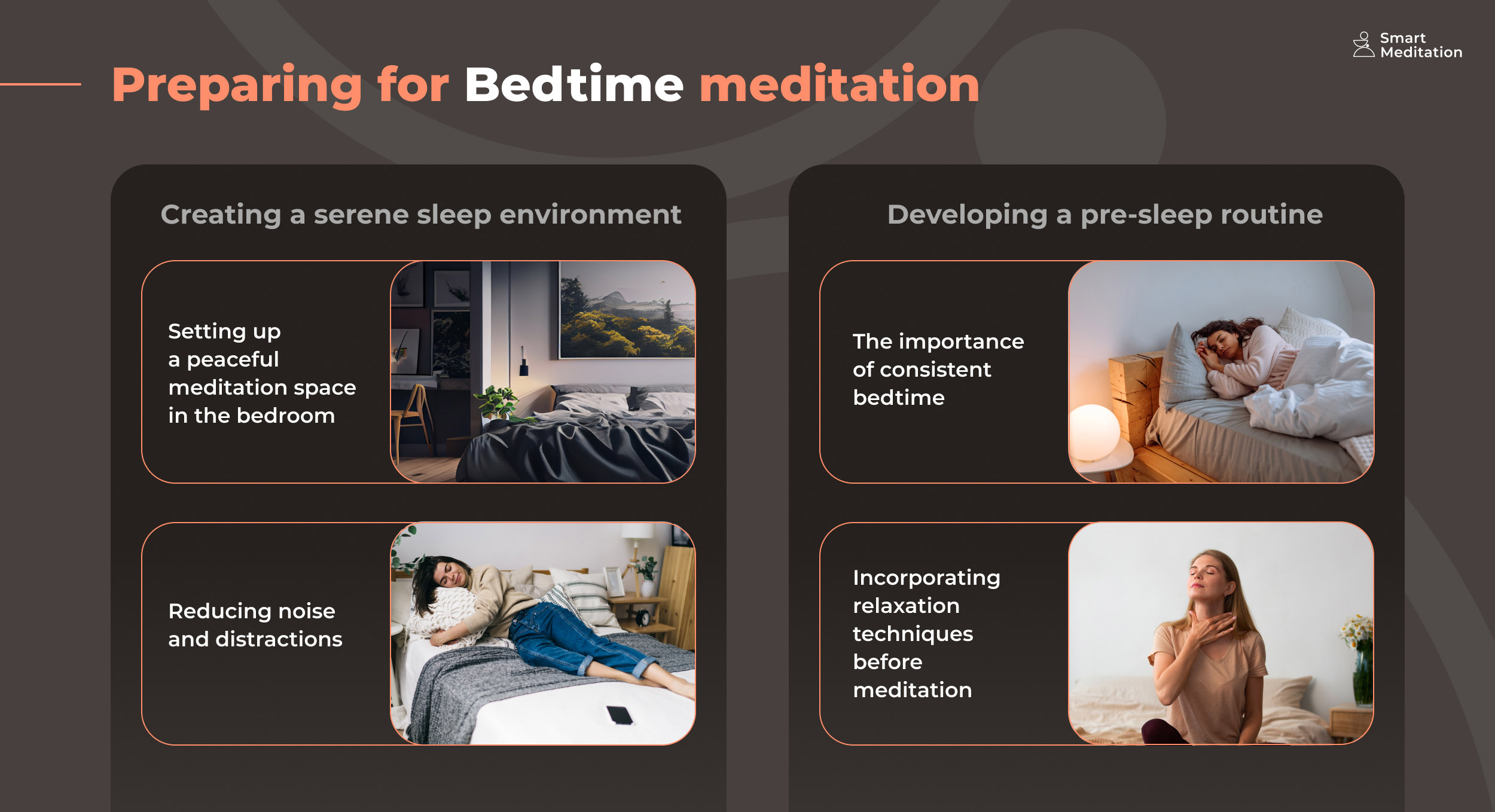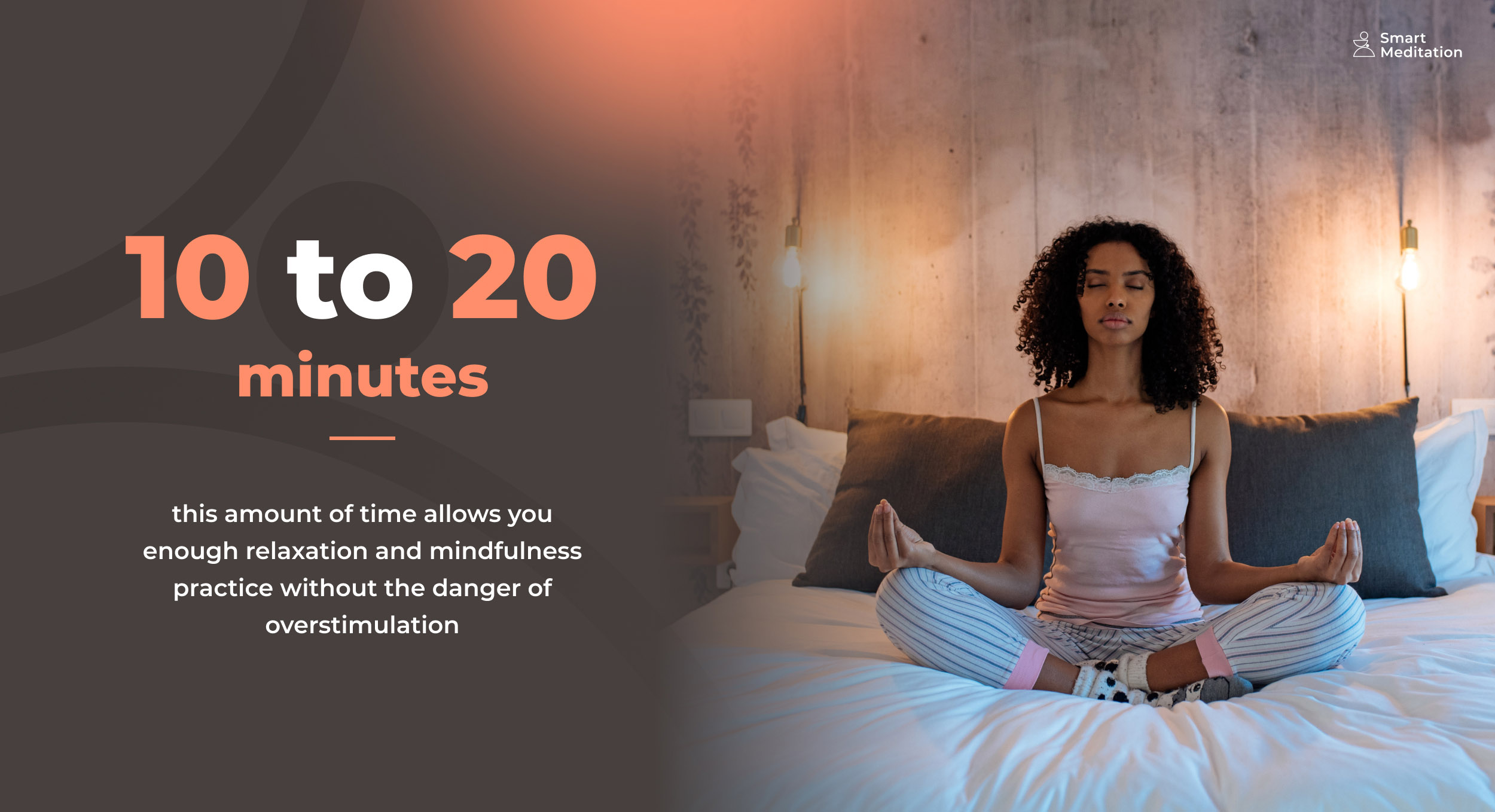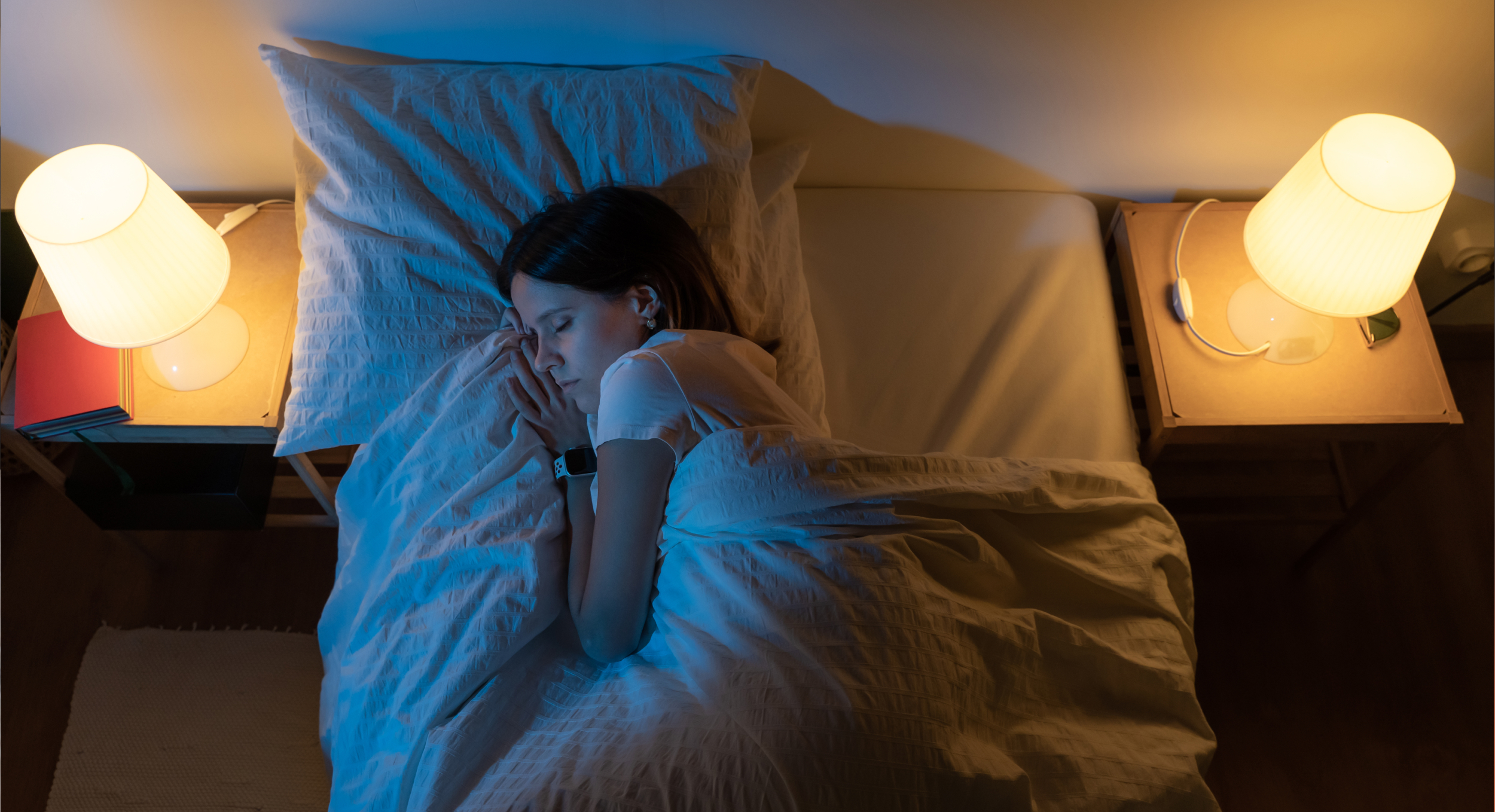
Sleep Soundly: A Comprehensive Guide to Meditating for Better Sleep
Good sleep and good wellbeing go hand in hand – it’s impossible to imagine a truly healthy lifestyle without a truly refreshing night rest. Unfortunately, millions of people all across the world struggle with just that, getting a good night’s sleep.
It may happen for various reasons, but usually at the root of it all we have stress and anxiety. Luckily, a practice like meditation for sleep can combat these two slumber killers and bring back high quality slumber into a person’s life.
In this article, we’re presenting you an all-encompassing guide on how to meditate to improve your sleep, and consequently, your life.
Understanding the Connection between Meditation and Sleep
Before we could go deep into how exactly you can employ meditation as your sleep improving tool, let’s break down how these two connected on the more basic level.
The impact of stress and anxiety on sleep
Stress and anxiety have always been common variables that are negatively impacting our sleep, but in today’s fast-paced culture, they seem more overwhelming than ever. The body’s “fight or flight” reaction triggered by high levels of stress, causes the release of cortisol and adrenaline and increases alertness while also interfering with the body’s circadian cycle. At the same time, anxiety, which is understood as the extreme level of constant stress, intensifies the mind’s propensity to dwell on worries before bed, making it difficult to get to sleep and stay asleep. The cycle of poor sleep quality is sustained by a loop of stressful thoughts and increased physiological arousal, which worsens the effects on general wellbeing.
How meditation promotes relaxation and reduces sleep disturbances
Luckily, we have the ancient practice of meditation that offers a potent remedy for stress and anxiety that prevent sound sleep. At its core, meditation is the development of non-reactive awareness of the current moment and learning to monitor your ideas without passing judgment. This change in cognitive attention aids in ending the pattern of worrying thoughts and helps gradual muscular relaxation. Through slow brain rewiring, meditation also improves our emotional control and lessens the activation of the sympathetic nervous system, which triggers the aforementioned “fight or flight” response. As a result, people who regularly meditate report having a greater capacity to let go of tensions and quickly shift into a relaxed state of mind.
Scientific evidence linking meditation to better sleep
At this point in time, there’s decades worth of research connecting meditation to high quality sleep at least to some degree. Meditation for sleep is known to reduce cortisol levels, heart rate, and blood pressure, all of which together contribute to the physiological conditions necessary for good night rest. Neuroimaging studies have also revealed alterations in areas of the brain related to stress control and emotional processing as a result of meditation’s effects on neural networks.
Moreover, the hormone melatonin, which is essential for controlling sleep-wake cycles, has been strongly associated with mindfulness meditation. This hormone change helps people fall asleep more quickly and have more restorative sleep cycles by promoting a more synchronized circadian rhythm. Overall, the data highlights the potential of meditation for sleep, not only as a method of relaxation but also as a method that has been approved by science for treating sleep disorders; although it’s highly recommended that you don’t use meditation as a full substitute for professional treatment.
Preparing for Bedtime Meditation
As we’ve already said in our sleep environment setup guide, for meditation, preparation is almost as important as the practice itself. You want to do it in the right place, at the right time and with the right mindset.

Creating a serene sleep environment
Setting up a peaceful meditation space in the bedroom
First things first, you need to set aside a certain spot in your bedroom for guided sleep meditations. To maintain an appropriate posture while meditating, set up a cozy cushion or chair in this area, also feel free to use bolsters or blankets as supports. Decorate the area with things that make you feel peaceful, such as plants, serene artwork, or symbolic artifacts that have special importance to you.
Even by doing something as small as altering the lighting to gentler, warmer tones in the evening, you can turn your bedroom into a tranquil meditation retreat. You can also use blackout curtains to prevent external light sources from disrupting your sleep. As for temperature, keep it relatively cool, if possible – usually between 60 and 67 degrees Fahrenheit (15 and 19 degrees Celsius).
Reducing noise and distractions
Noise reduction has a lot of sides to it and is not limited to just shutting windows and doors. You can try to seal any holes around windows and doors with weatherstripping to prevent noise from entering from the outside and place draught stoppers at the base of the doors.
You can also have a go at earplugs or noise-canceling headphones if ambient noise is still a problem. Or you could simply embrace the background noise with the help of special meditation music (which we already covered here).
And to prevent any distractions during your meditation for sleep practice, remove any objects that can divert your attention from your space and switch your electronic gadgets to “Do Not Disturb” mode.
Developing a pre-sleep routine
The importance of consistent bedtime
Establish a schedule to help you go smoothly from your everyday activities to the peaceful state of sleep. To prepare yourself for bedtime, take part in relaxing activities like having a warm bath, moderate stretching, or reading a book (ideally one that isn’t stimulating). Avoid activities that are really stressful or exciting right before night since they might prevent you from calming down.
Don’t forget that your body’s internal clock is regulated by consistency in your sleep routine, which improves the quality of your rest. Even on weekends, you’ll be well advised to keep your bedtime and wake up hours consistent. This habit strengthens your body’s natural sleep-wake cycle, which makes it simpler to go to sleep and wake up in the morning.
Incorporating relaxation techniques before meditation
Feel free to integrate other relaxation methods before beginning your meditation for sleeping to ease the transition. Exercises that include deep breathing, such as diaphragmatic breathing or the 4-7-8 method, can get the body ready for the session. On top of that, stretching also gently relieves tension, especially in the neck, shoulders, and back, which are vulnerable to stress buildup. Progressive muscle relaxation is another technique you may use to relax your entire body by methodically tensing and releasing different muscle groups.
Best Meditation Practices for Better Sleep
Now let’s get into some of the most popular and effective meditation techniques for the benefit of your nightly rest:
Guided Sleep Meditation
Guided meditation for sleep is a practice of using audio recordings or applications for structured meditation for sleep sessions designed to encourage relaxation and good sleep. During these sessions, you’ll usually be guided through a series of imagery and visualization exercises by a calming voice coming from your device. With this method, you can get your mind off the tensions and problems that could otherwise keep you awake by picturing pleasant scenarios like floating on a tranquil beach or strolling through a serene forest. And as a result of the expertly designed narrative’s ability, overtime your mind learns to relax before going to bed and make your sleep more restorative.
Mindfulness Meditation
The foundation of mindfulness meditation is developing non-judgmental awareness of the present moment. If it sounds a bit difficult, don’t worry – it only means that you teach yourself to detach your mind from rushing thoughts and focus your attention on your feelings and sensations without trying to analyze them. By incorporating mindfulness into your everyday activities, you not only improve self-awareness, but also massively relieve stress and prepare your mind for deep sleep.
Progressive Muscle Relaxation (PMR)
Progressive muscle relaxation is a method that involves tensing and relaxing of various muscle groups. The cumulative stress of everyday activities and the physical tension brought on by stress are two issues that PMR is particularly good at treating. With this technique, you get a chance at reducing muscular stiffness, increasing blood circulation, and generating a physical state of comfort before bed.
Loving-Kindness Meditation for Peaceful Sleep
Loving-kindness meditation for sleep is all about generating sentiments of compassion, kindness, and goodwill towards oneself and others. This method helps you develop a feeling of emotional warmth and connection with your loved ones by repeating positive messages or intentions. It also aids in combating the negative or self-critical thoughts that so often come to mind when we are by ourselves at night. Especially for those who struggle with self-compassion and find it difficult to unwind emotionally before night, loving-kindness meditation can be very beneficial.
Meditation Positions for Sleep
Now that we’ve looked at meditation techniques, let’s review some of the most common body positions for your bedtime sessions.
Finding a comfortable meditation posture for bedtime
When choosing a meditation for sleeping position, put comfort and ease first. Although sitting poses like the lotus or cross-legged posture provide stability, they might not be the most pleasant option for unwinding. Instead, choose a position that supports your body and preserves the natural curve of your spine.
To make it more comfortable for your legs to rest, you can try raising your hips slightly by sitting on a cushion or pillow. This lessens the possibility of extended sitting-related pain or numbness. On top of that, to encourage a sense of being grounded, place your hands softly on your lap or thighs. Making sure your body is at ease enables you to concentrate more on the meditation technique and less on any discomfort.
Exploring lying down meditation techniques
Some people may find it not appropriate to employ sitting positions for bedtime meditations, and this is completely fine. Lying down is also a very convenient and pleasant position for guided meditation for sleep – simply lay on your back with a cushion supporting your head and neck to prevent drowsiness and begin meditating.
To make the most of the lying down position, think about using the body scan technique or guided imagery. In the first case, the body scan helps to reduce stress and promote relaxation by consciously shifting your awareness around various body areas. And through guided imagery, you can take your mind off of your daily troubles by picturing relaxing scenarios in which you’re also lying down – for instance, lying in the tall, soft summer grass.
Timing and Duration of Bedtime Meditation
As with most things in life, for good bedtime meditation, timing is key. And the clue is in the name – you want these sessions to be around the time you go to bed. But when exactly? And how long should they be?
Choosing the ideal time for pre-sleep meditation
Pick a time slot when you can relax after the day’s activities without feeling pressured. The best time to do your meditation for sleeping sessions for most people is around 30 to 60 minutes before going to bed. However, remember that the optimal interval varies from person to person and starting your guided sleep meditations too early may not have a lasting impact on your ready for rest, while starting it too close to bedtime may adversely make you more awake.
Recommended meditation durations for better sleep
For nighttime, it’s ideal to keep meditation for sleep sessions brief and concentrated. Start out with ones that last 10 to 20 minutes – this amount of time allows you enough relaxation and mindfulness practice without the danger of overstimulation. Longer sessions might have the opposite effect of what the best guided meditation for sleep is intended for, which are restlessness or increased alertness. Focus on quality over quantity and make sure your practice promotes a calm frame of mind that is favorable to sleeping. And don’t forget that you can always use special meditation apps to help you regulate your sessions.

Adjusting meditation practices based on individual needs
Make adjustments to your meditation for sleeping routine based on your own tastes and reactions. If you frequently fall asleep while meditation, you could choose to practice in a little more upright position or use techniques that need more concentration, including deep breathing exercises. Try out several methods to find the ones that make you feel relaxed without making you sleepy. Pay attention to how your body and mind feel after meditating; if you feel too alert, think about changing your routine.
Dealing with Sleep Challenges
Despite its very relaxing and beneficial nature, meditation, especially at bedtime, could be a real challenge. Don’t worry, though, it’s nothing that you can’t overcome without good application. Let’s have a brief look at the most common pains people experience and how they can be helped.
Addressing common obstacles during meditation for sleep
If your mind is racing when you are meditating, try using concentrated attention techniques. Focus on how your breath feels, whether it’s the air moving through your nose or the rise and fall of your stomach. As an alternative, you can focus your attention and divert it from racing thoughts by repeating a short mantra or relaxing word.
If you feel physical pain whilst meditation, try different positions – consider kneeling, using a meditation bench, or even laying down if sitting becomes unpleasant (and if you can stay awake). Also don’t forget about pillows and cushions as they can offer crucial support to relieve you of pain as well.
If you feel too restless to meditate, do some easy stretching or progressive muscle relaxation before your session. This prepares your body for the practice and should ease most of your physical stress, or at least enough to begin your session.
And if you feel too sleepy, try a more upright position to increase your attentiveness and focus – keep your back straight and slightly open your eyes. And to keep your mind active, use techniques like careful observation of your body’s feelings or noises.
Integrating meditation with other sleep aids
Naturally, meditation isn’t the only thing that can help you with sleep, and you’re very encouraged to try combining them. Mixing your sessions up with relaxing herbal teas such as chamomile, valerian root, or passionflower is a good start. You can also consider playing background music or switching on white noise generators to help you fall asleep faster. Finally, aromatherapy can also be very helpful. During your meditation for sleep, gently diffuse essential scents like lavender, bergamot, or cedarwood and the scents will bring about a calmness that heightens the relaxing impact on your mind and body.
Developing a Consistent Bedtime Meditation Routine
Finally, let’s talk about why it’s important to remain committed to the meditation practice and how we can do it in spite of all the difficulties we can face along the way.
The importance of regularity in meditation practice
Committing to a consistent meditation routine is similar to teaching your body’s internal clock new tricks. Set aside a certain period each night to practice meditation – without consistency the effects of the practice will very likely be minimal. Consistency is also something that is great for your circadian rhythm which tells your body when it’s time to get ready for bed. Organize a peaceful setting for your sessions, create engaging rituals to keep things fresh and enjoyable, and encourage yourself to carry on with positive thoughts.
Tracking progress and improvements in sleep patterns
Keeping a sleep journal can provide you insightful information about how your meditation practice is impacting your sleep. Note specifics like how long and what kind of meditation you did, how you felt afterward, and how well you slept that night. Over time, certain trends may start to show themselves – for example, you could find that using a certain meditation approach regularly results in improved sleep, or you might observe differences in sleep quality depending on when you meditate. Not to mention, keeping a journal is another good way of helping your consistency.
Making adjustments to the meditation routine as needed
Last but not least, flexibility in meditation is essential. Make sure to review your sleep diary frequently to gauge your improvement and adjust your session in accordance with it. For example, you can always Increase the frequency of your meditation practices if you see that they lead to deeper slumber. Or you can consider altering the timing if you discover that your meditation energizes rather than calms you. Overall, experiment with different approaches and times and keep in mind that your meditation should always be able to adapt to your changing demands.
Conclusion
There’s no doubt that stress is the main factor of disrupted and unfulfilling sleep. However, with the power of numerous meditation techniques such as mindfulness, progressive muscle relaxation or loving kindness, you can significantly reduce anxiety and help your sleep.
Before you start meditating, make sure that you’ve created a good, comforting environment, with appropriate noise isolation, lighting and decor. Try experimenting with different meditation positions, be it sitting or laying down. And don’t forget to get the timing right and stay consistent with the practice – only then can you really feel all the positive impact.






